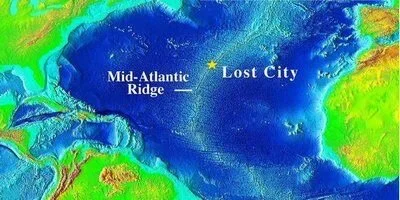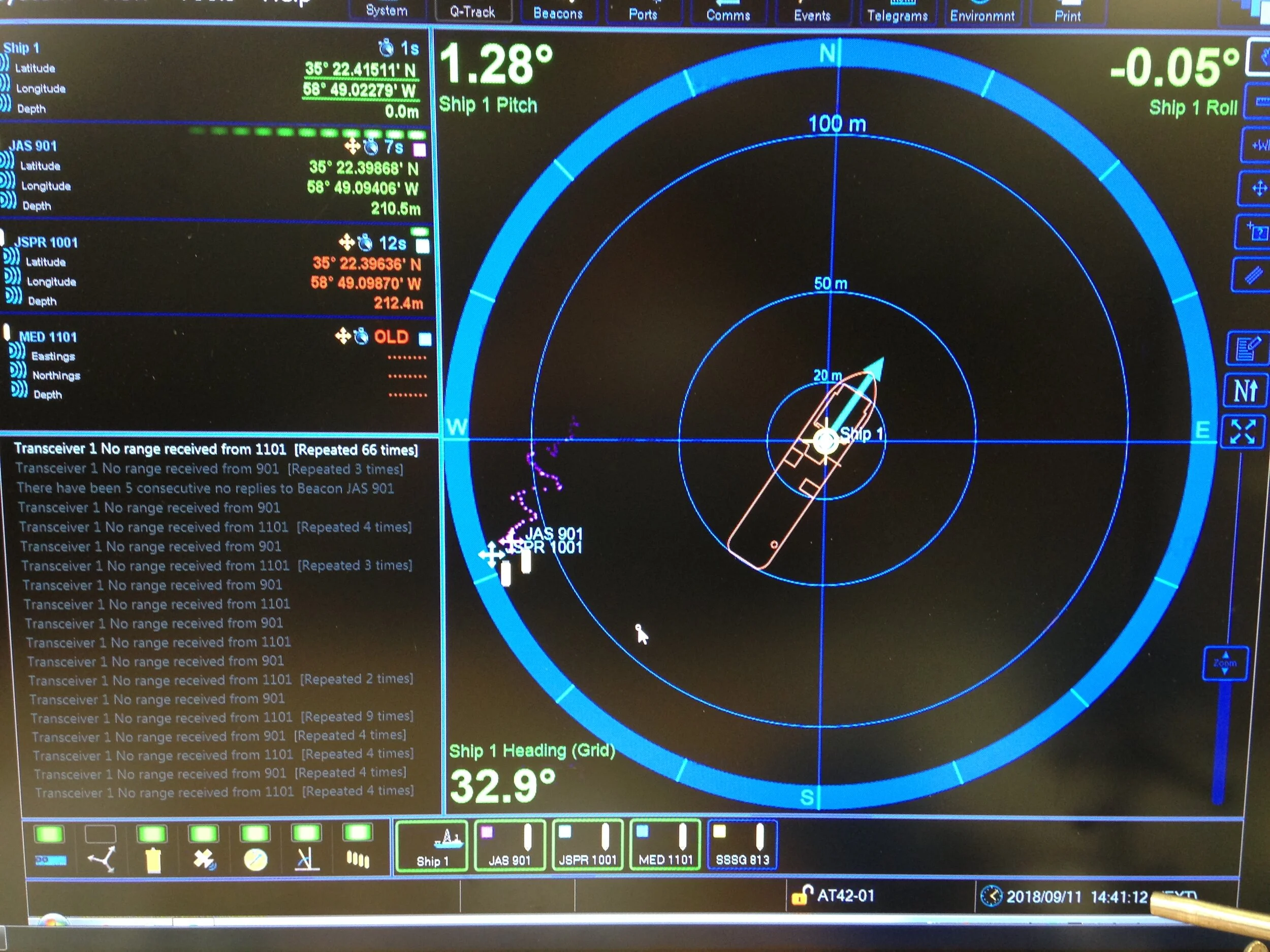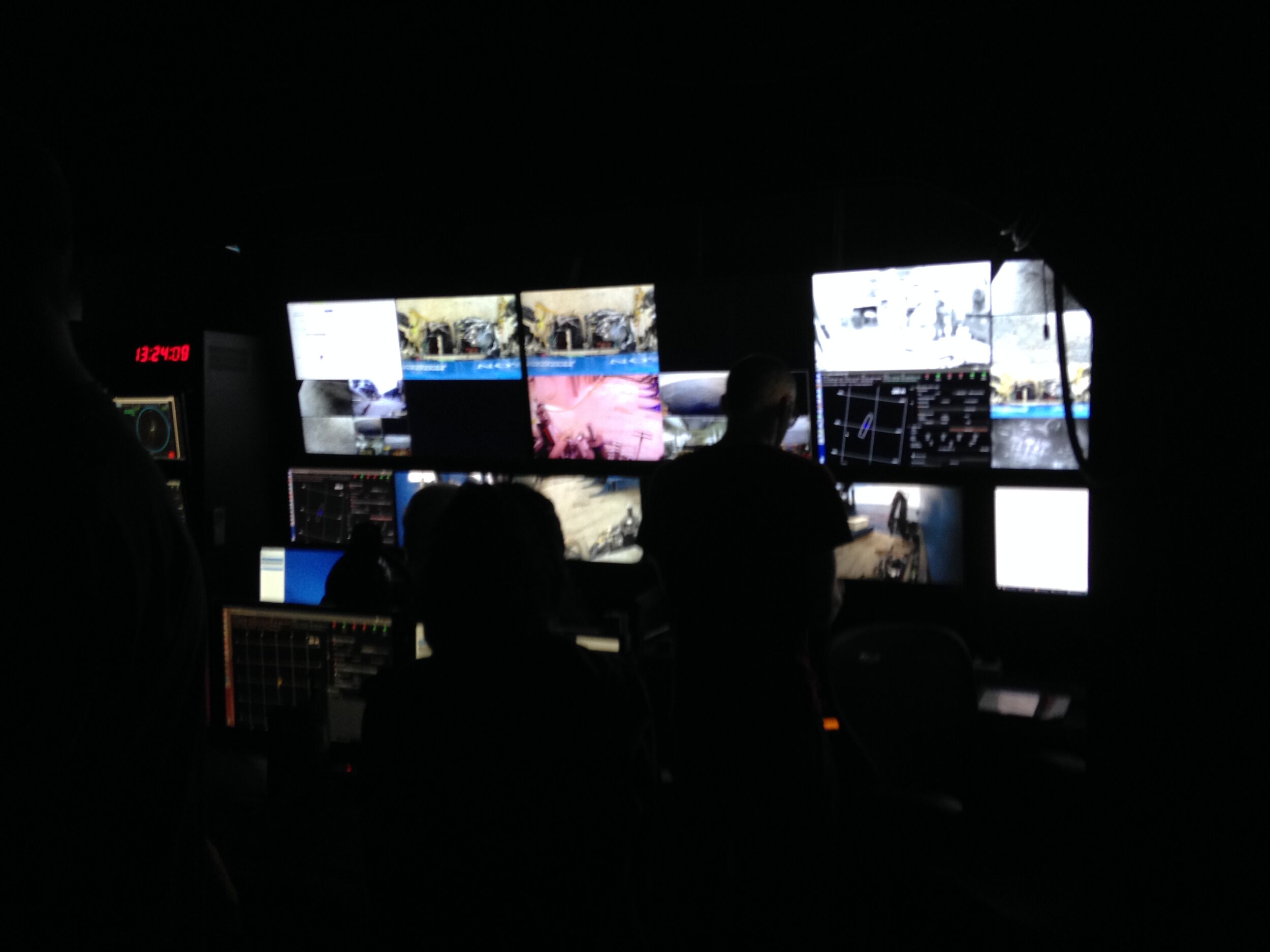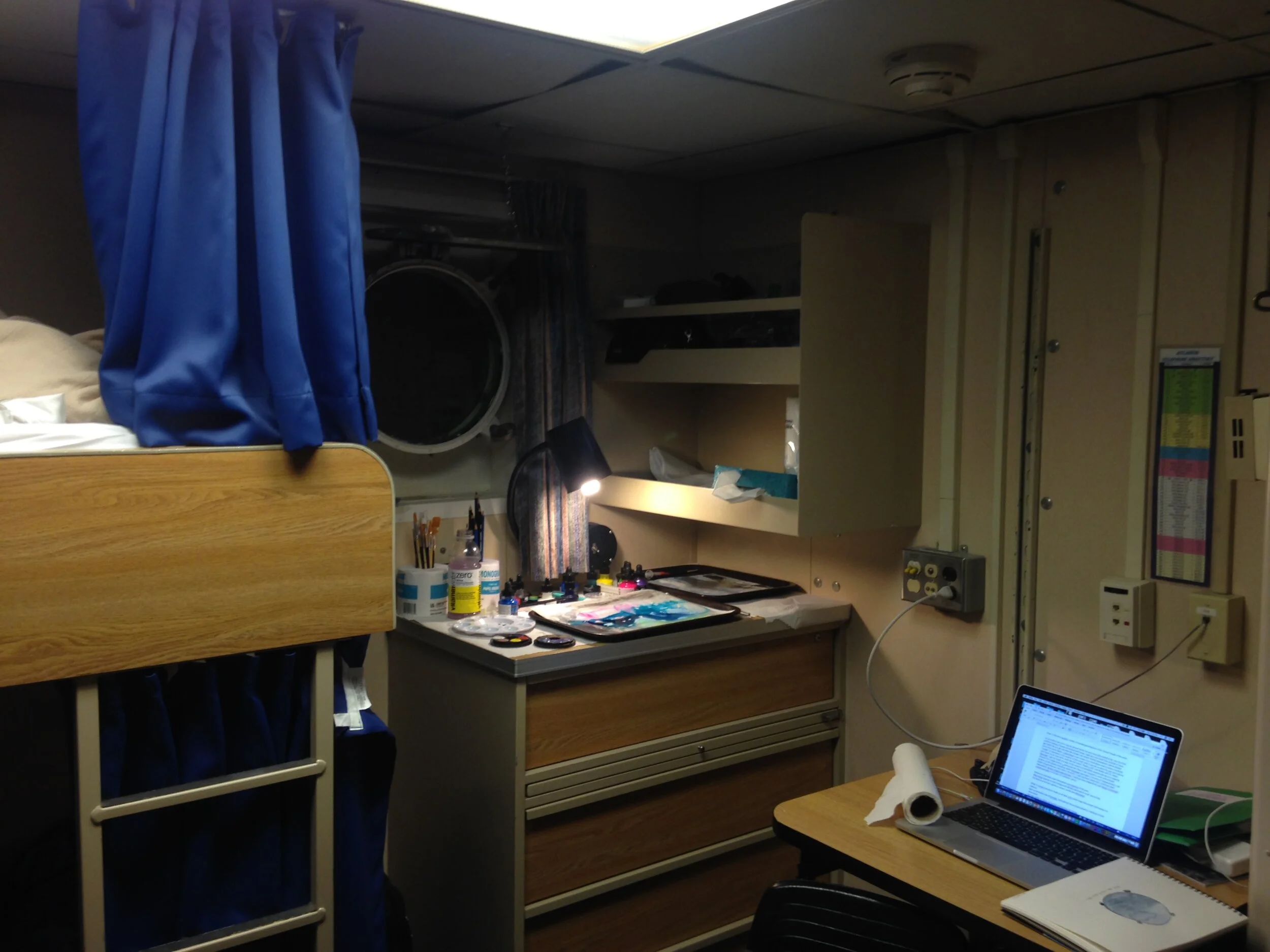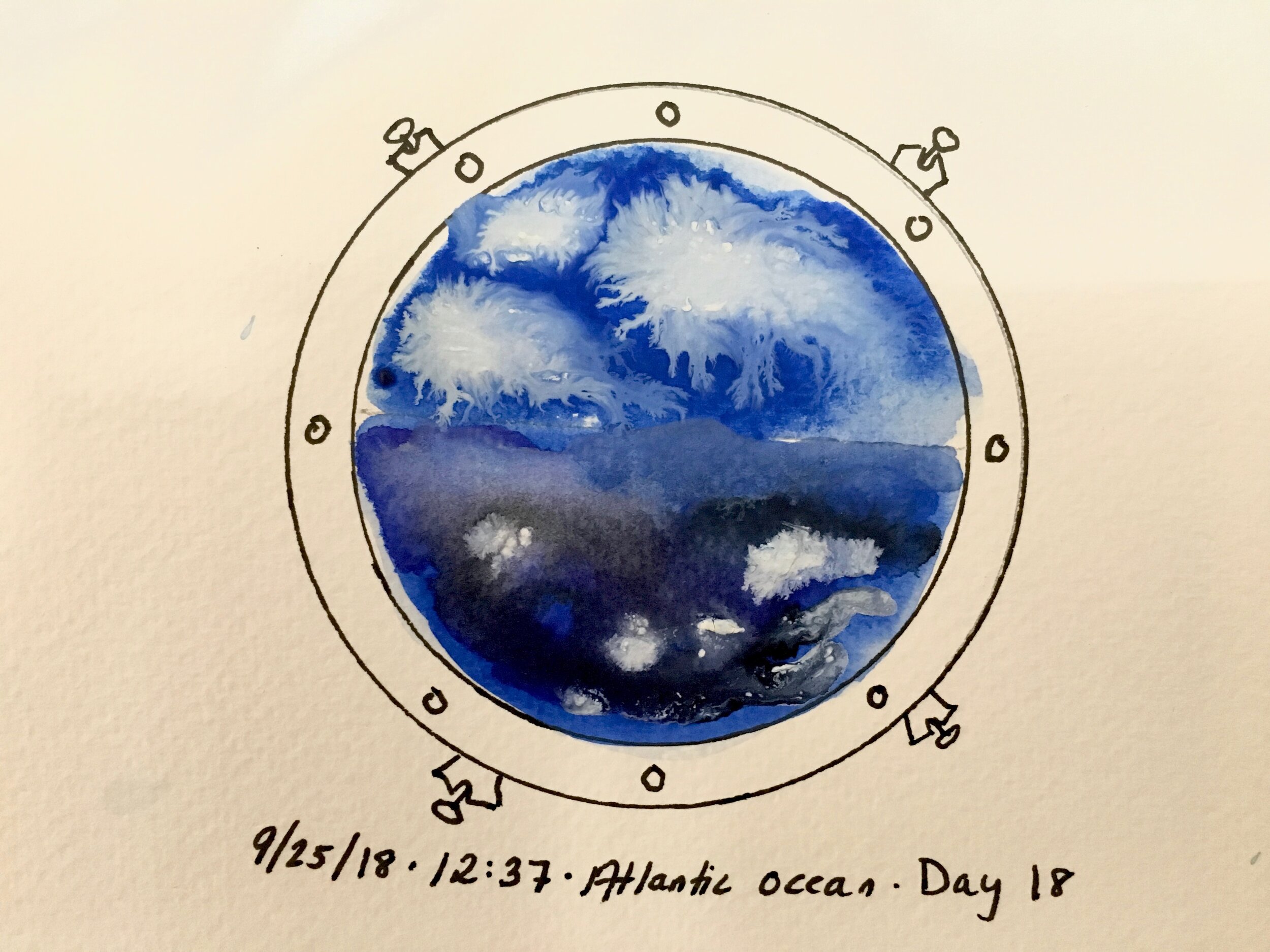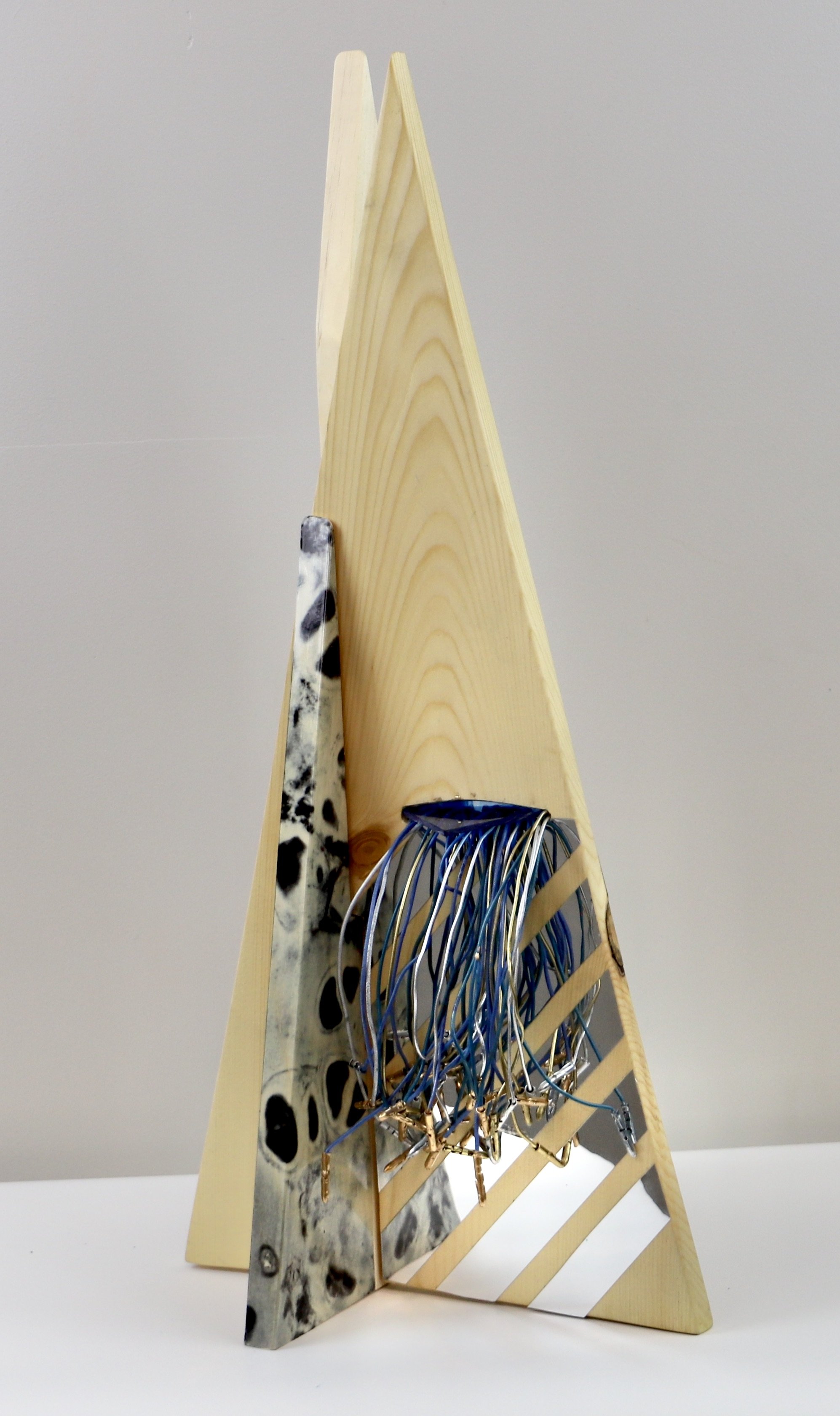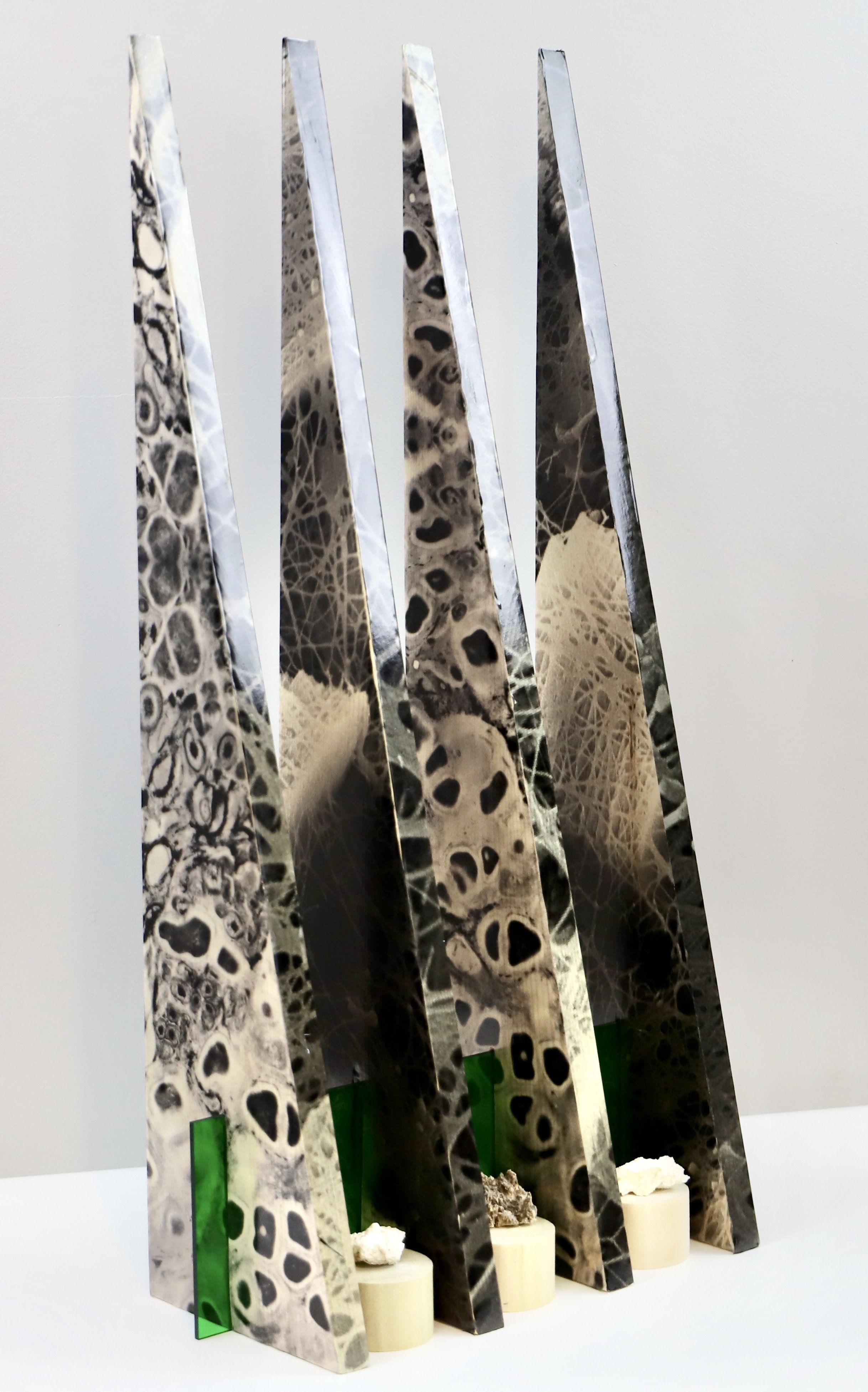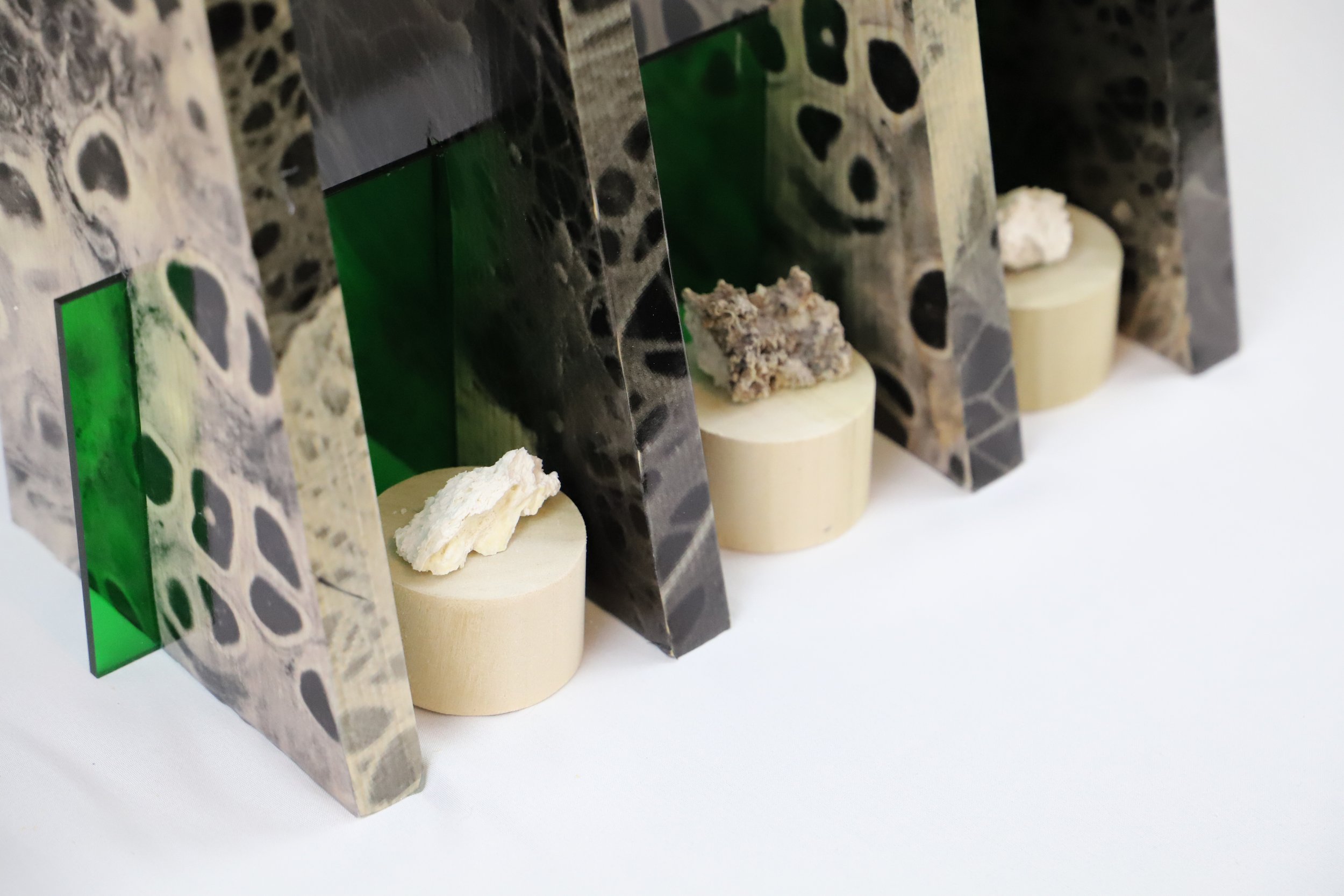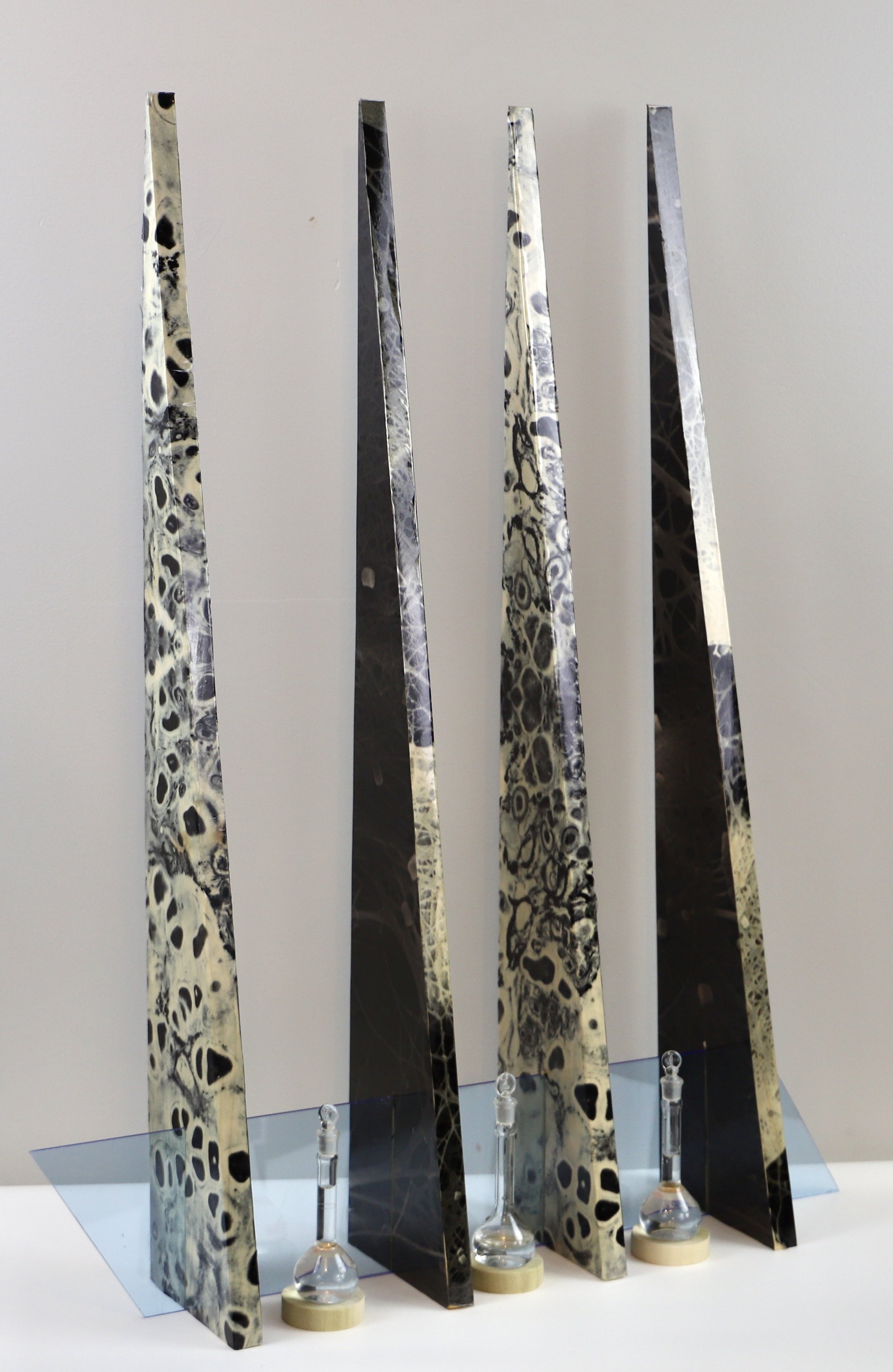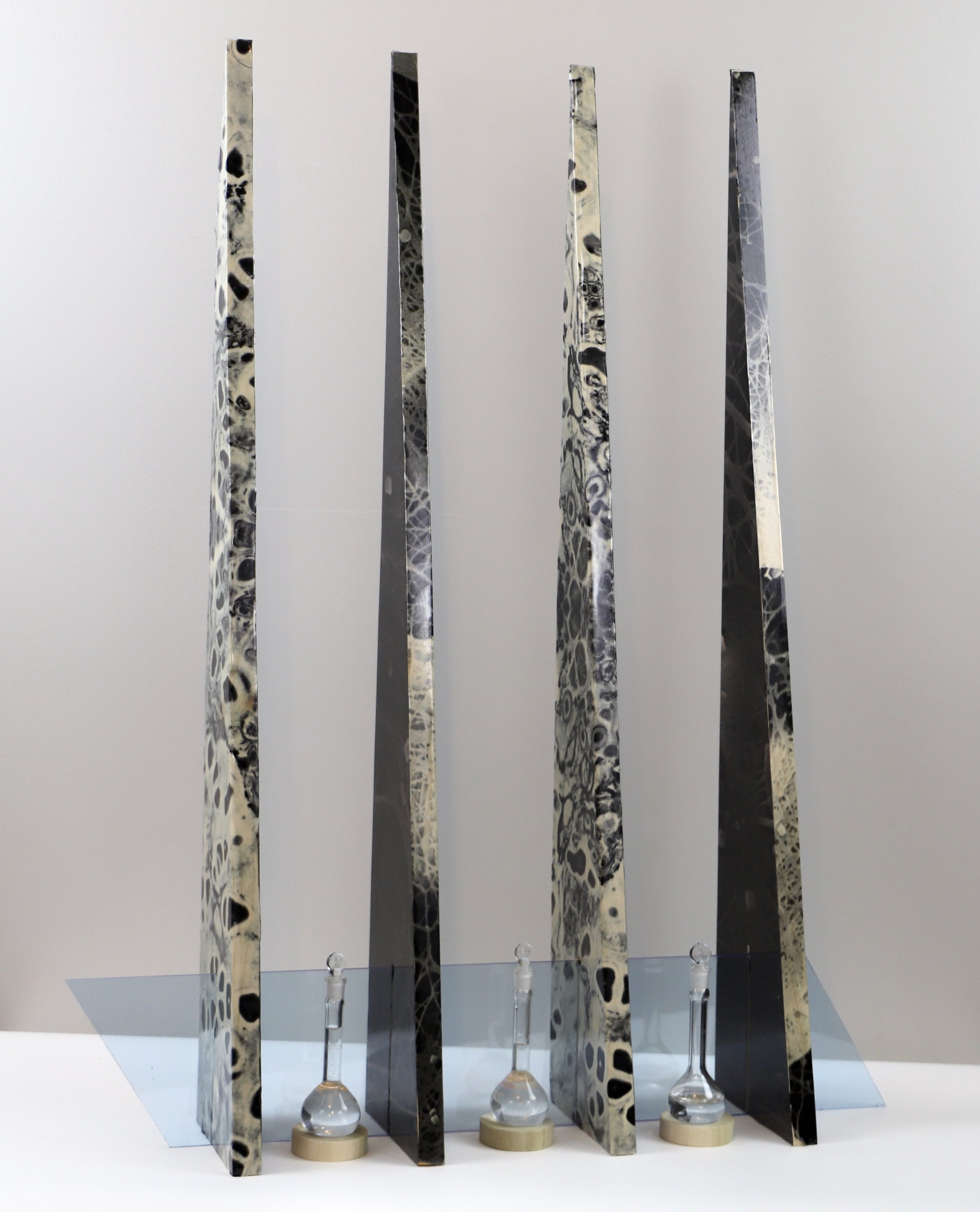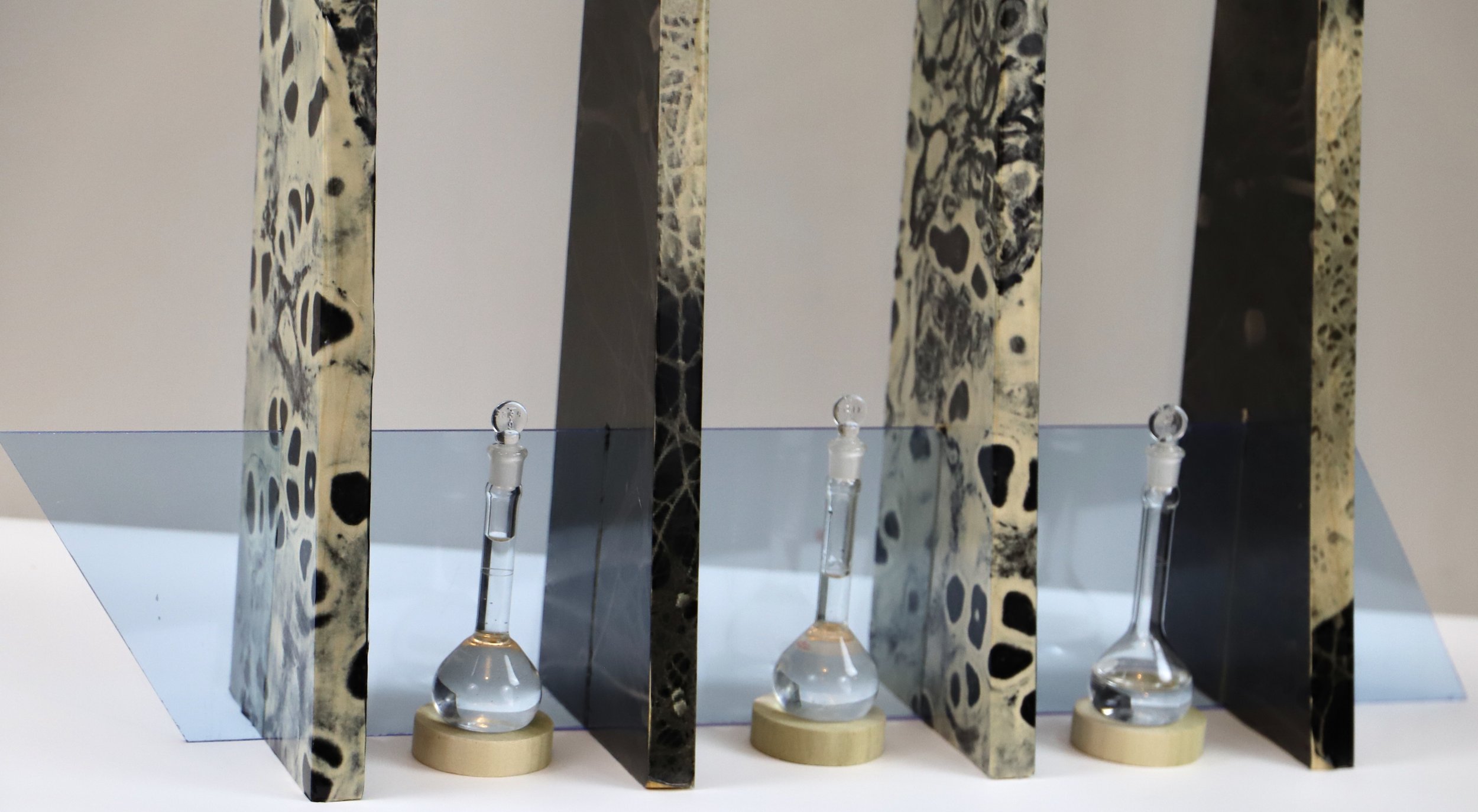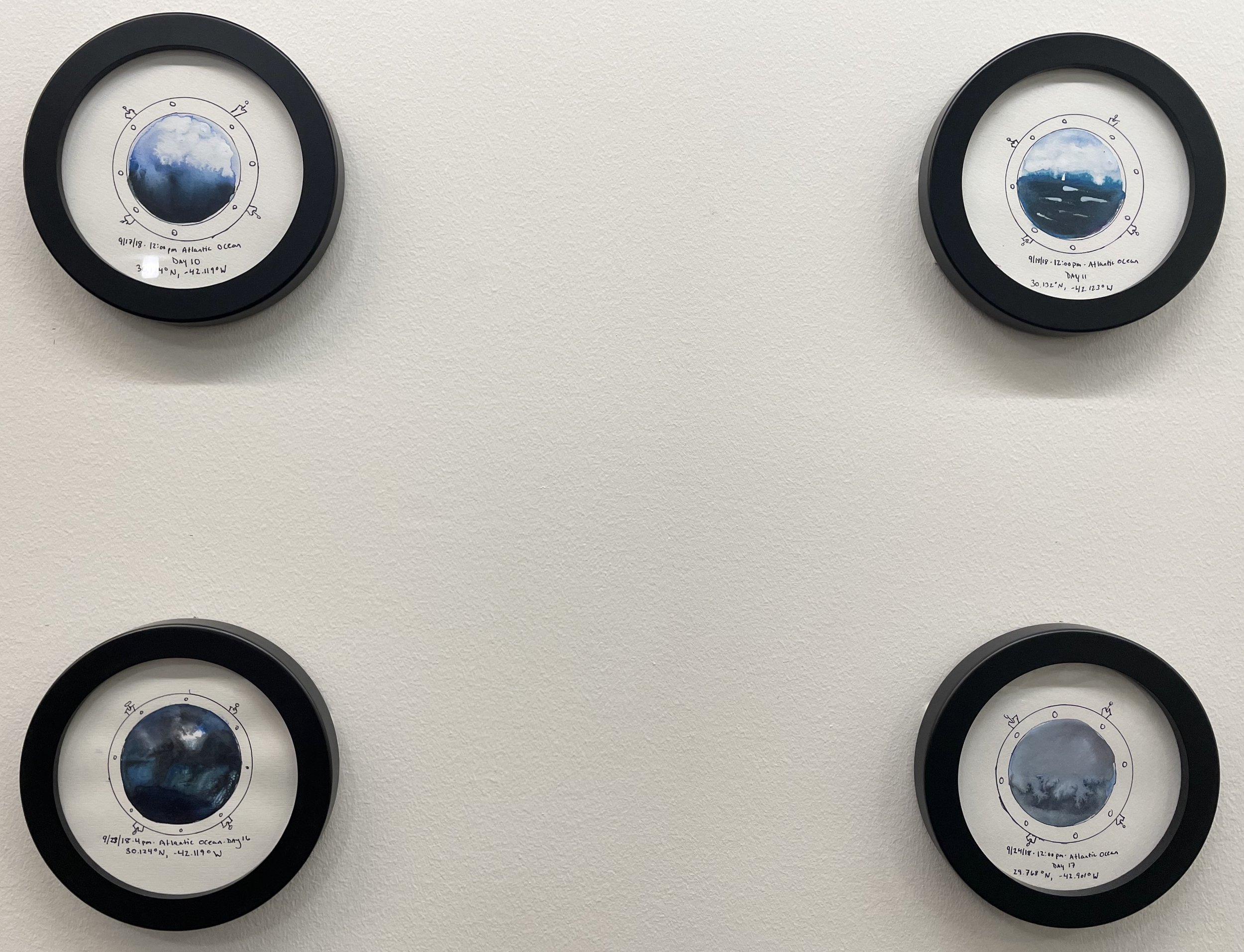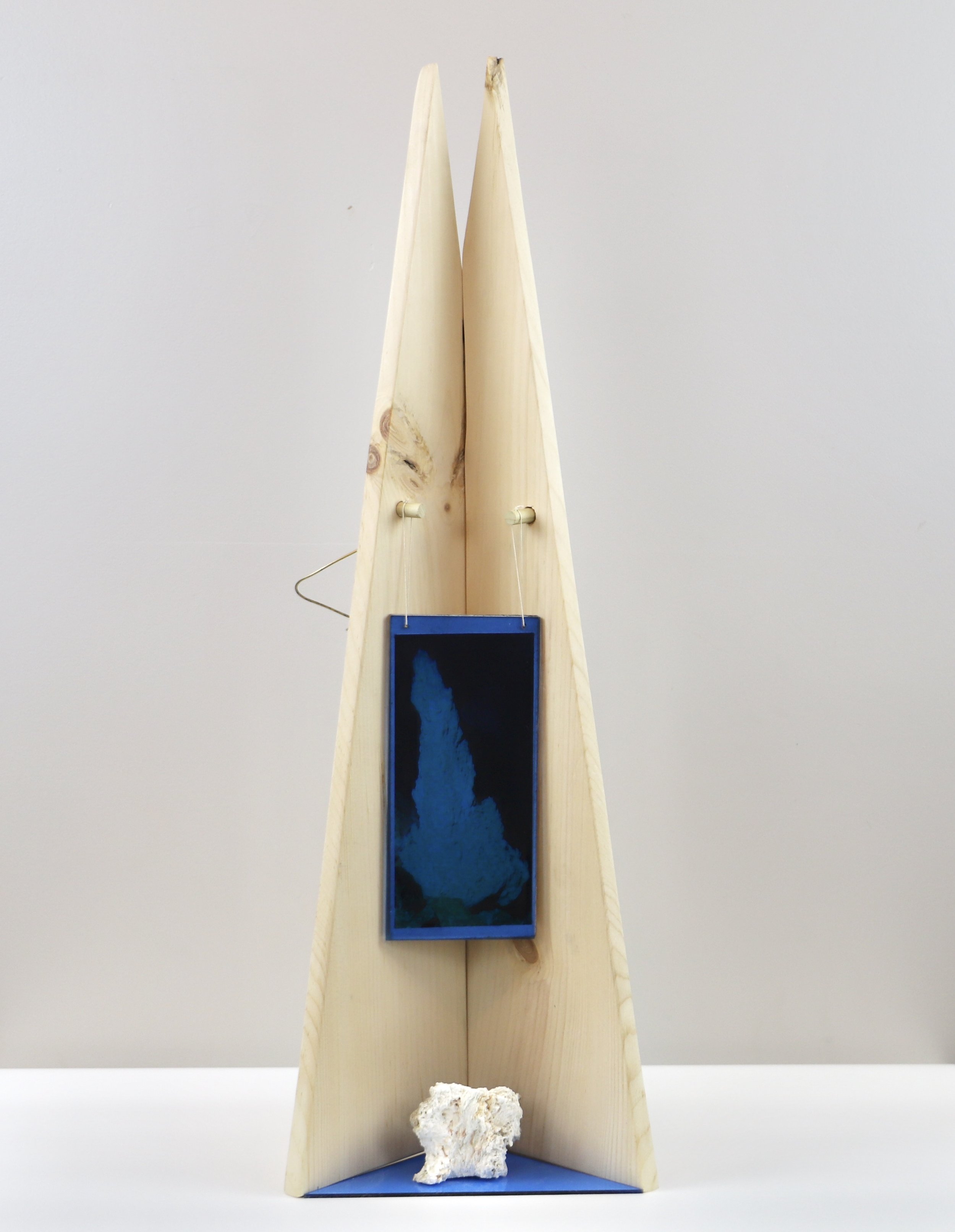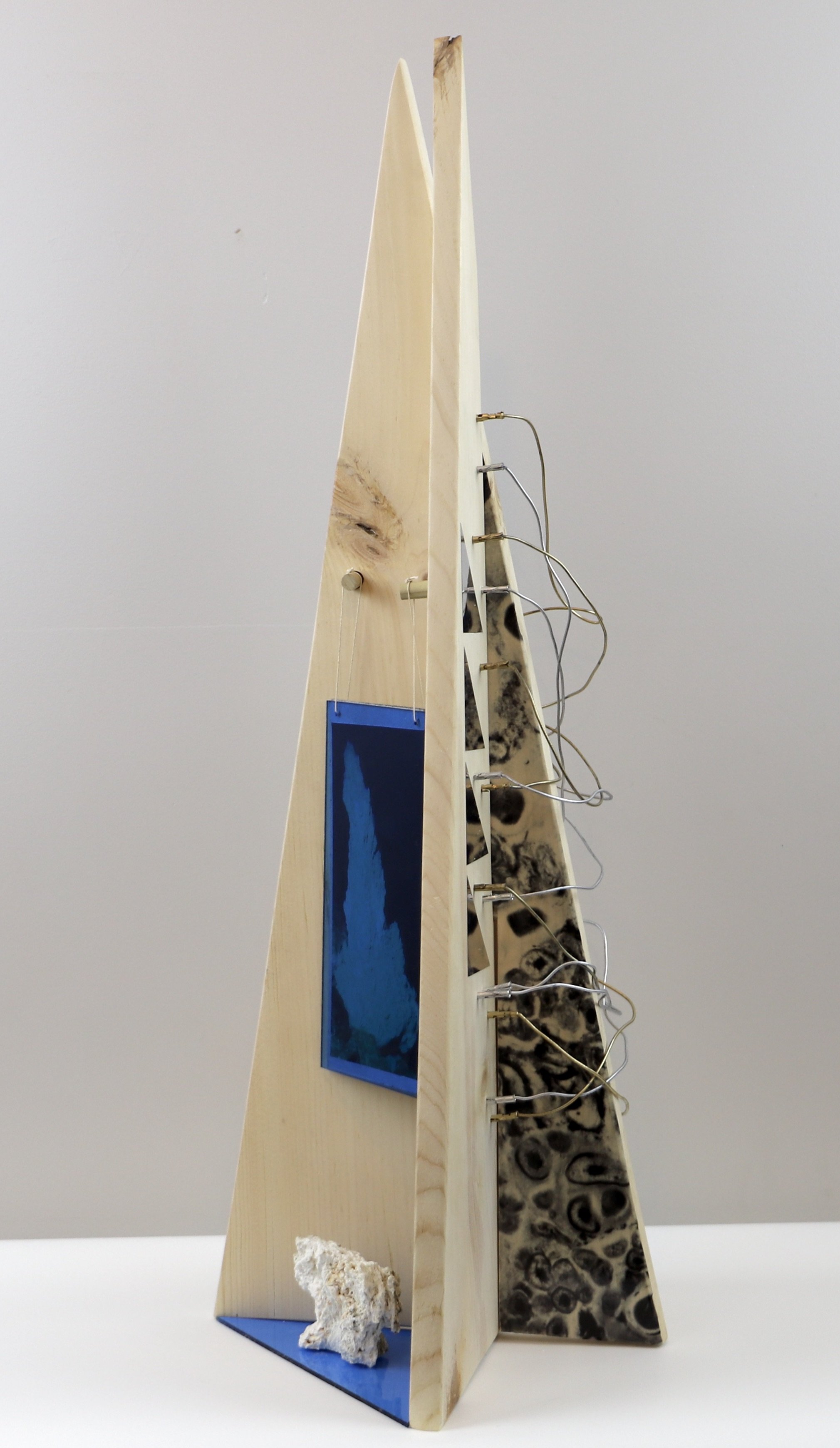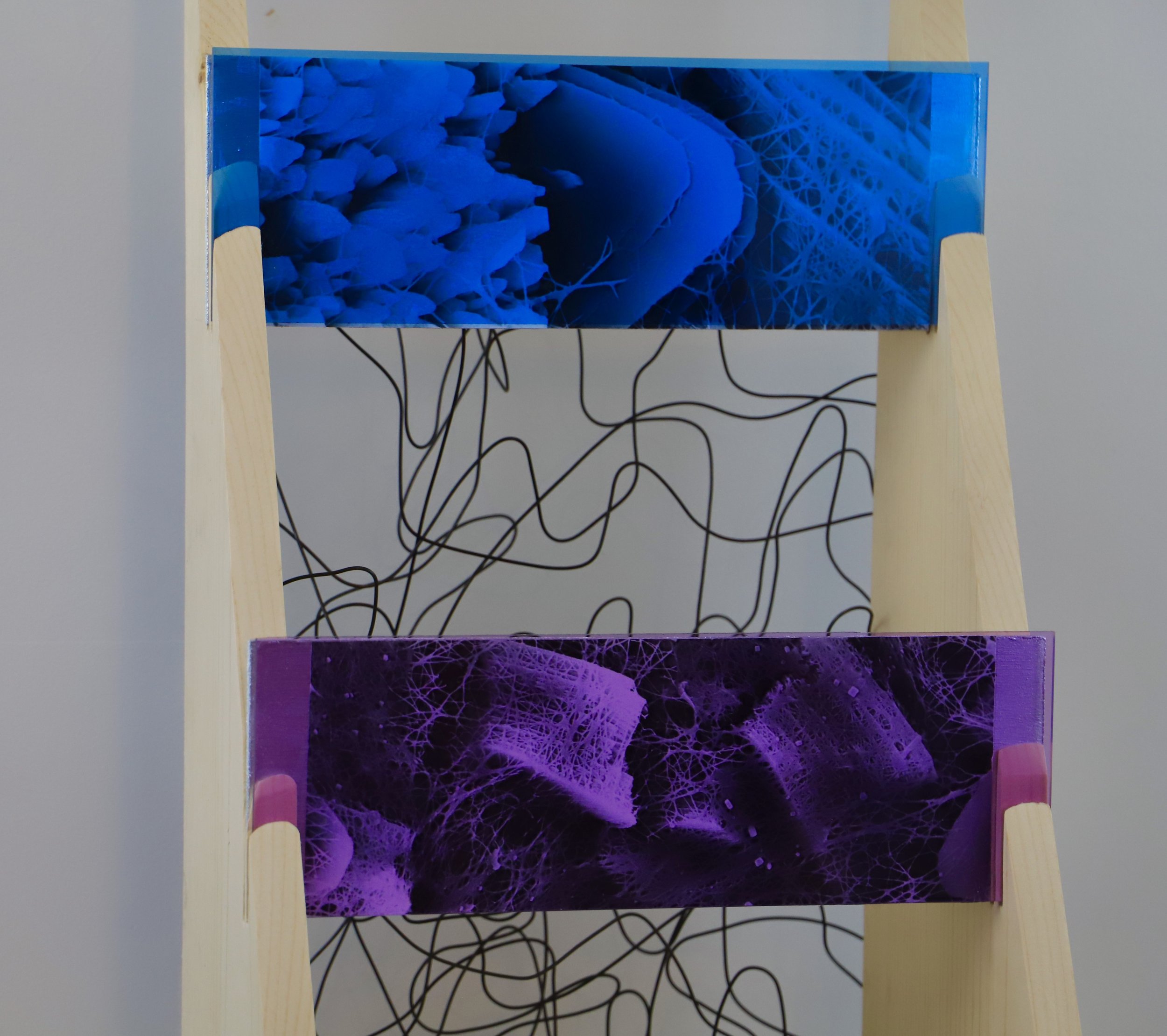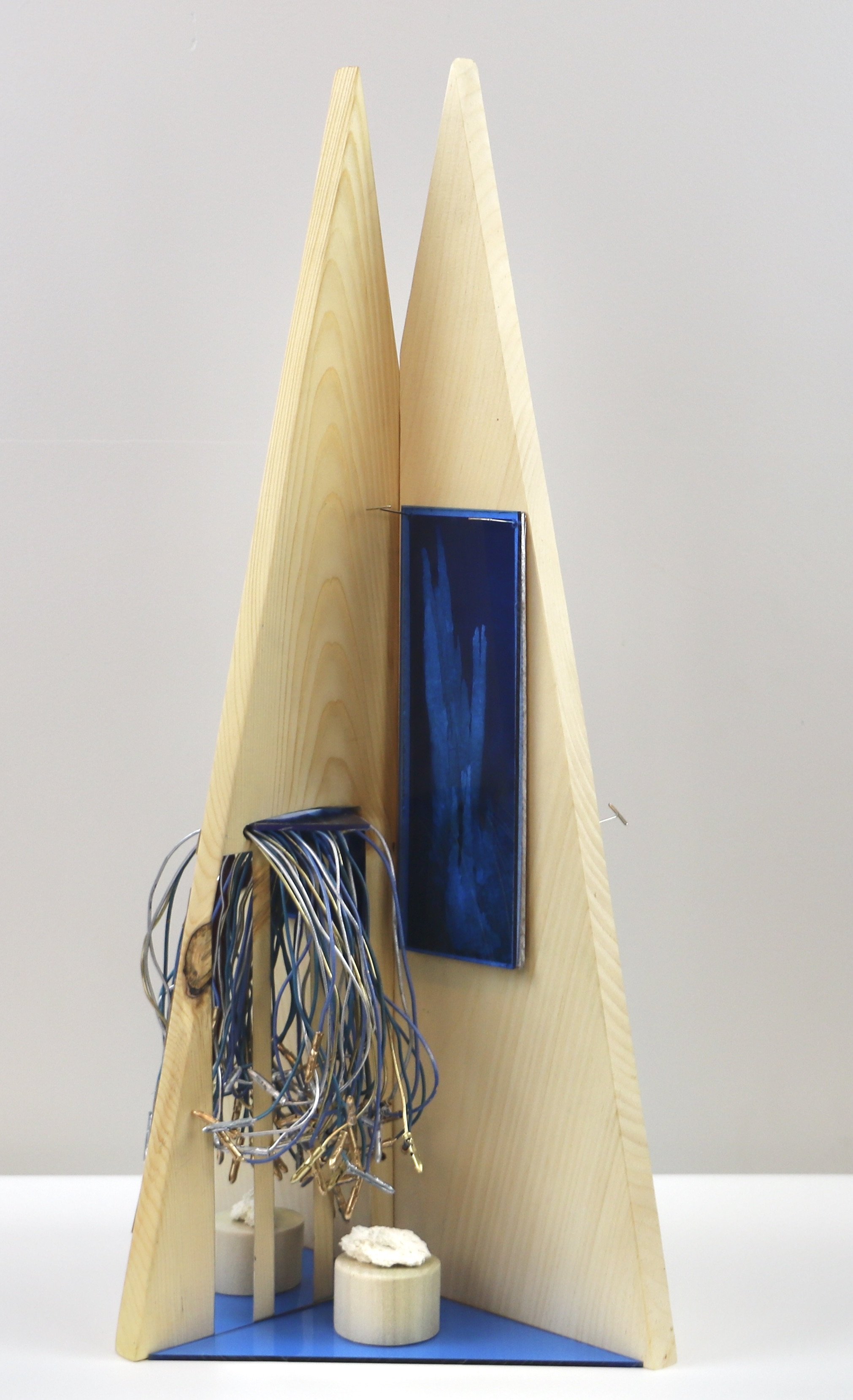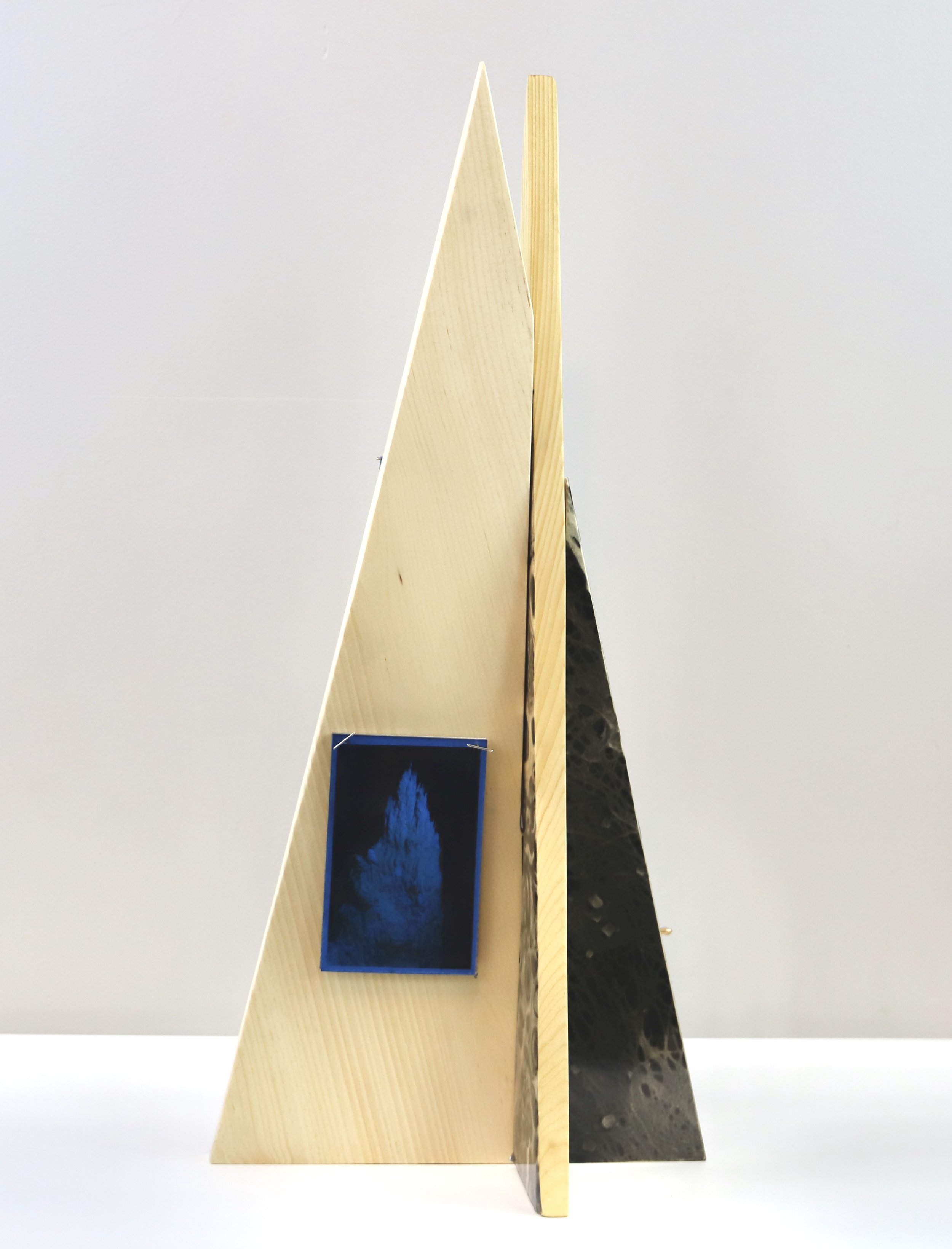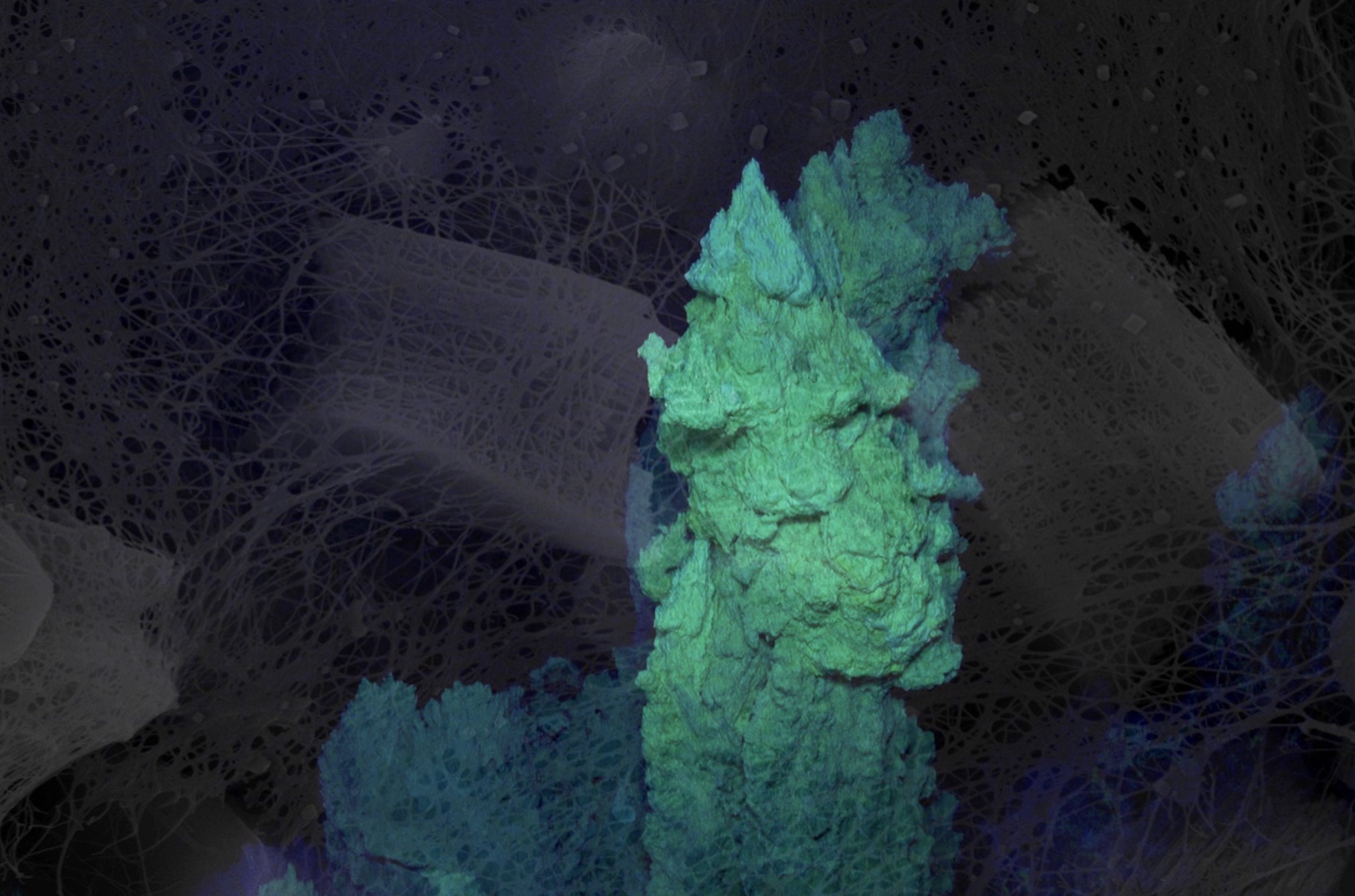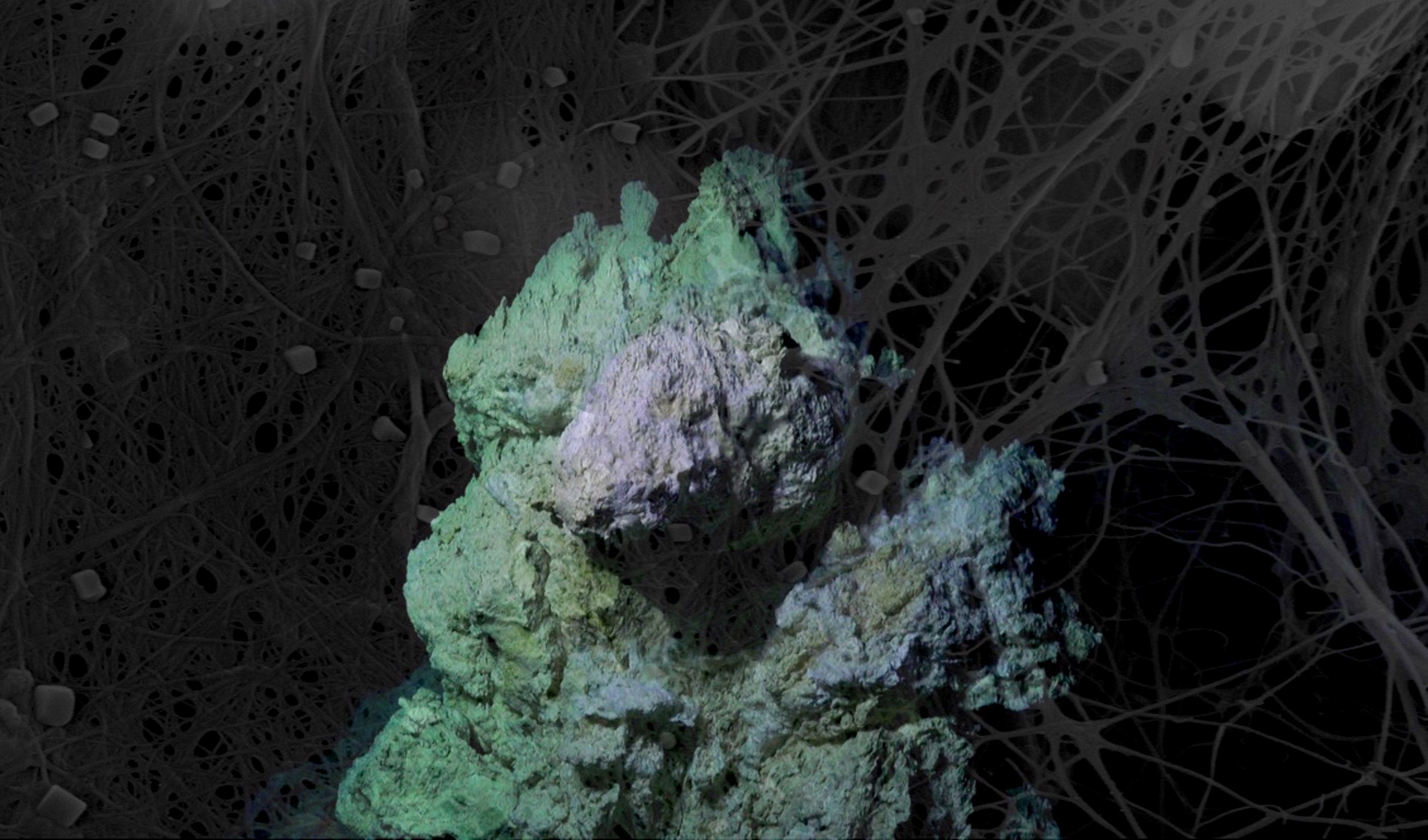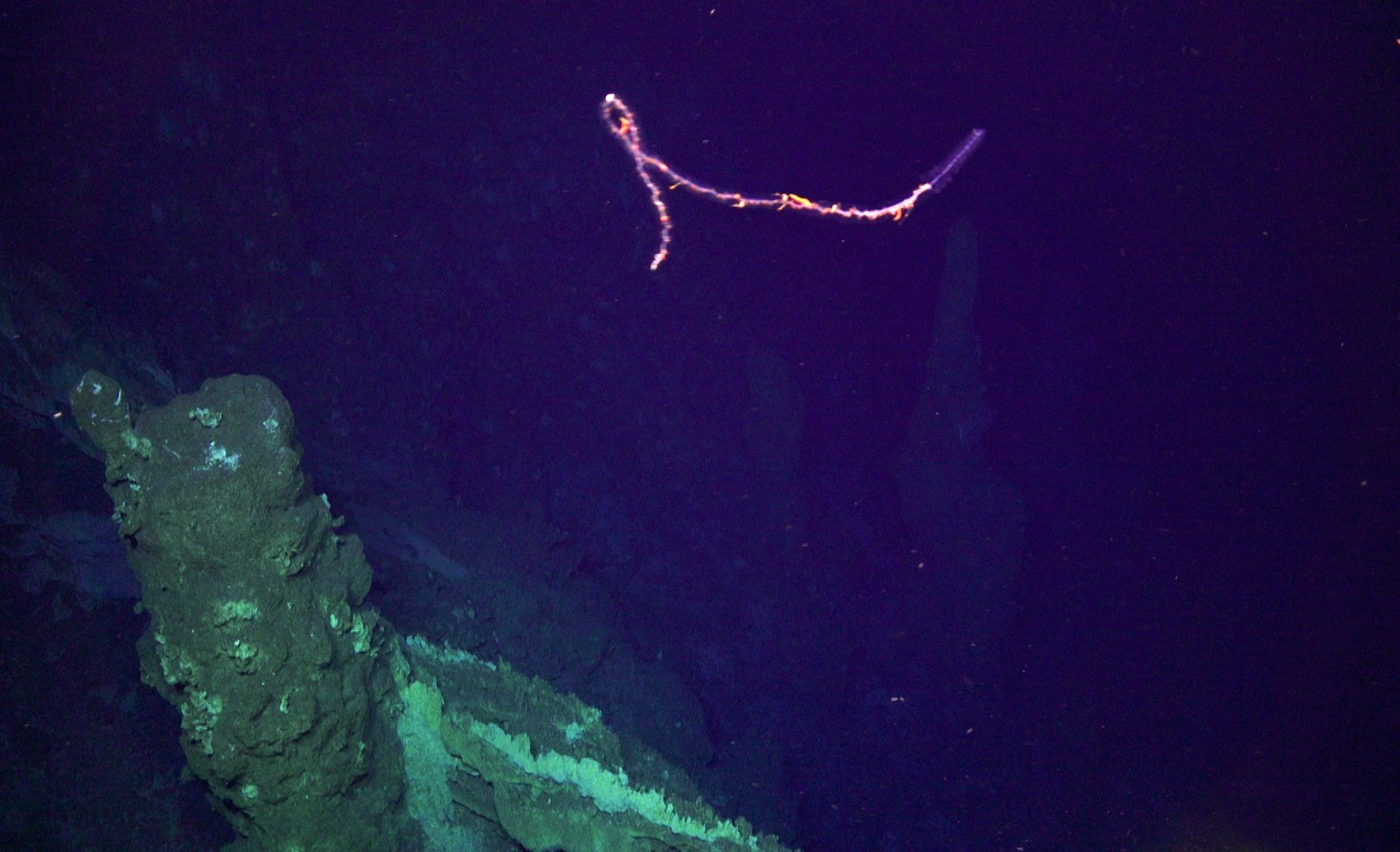Anna Davidson
During September 2018, I was invited by oceanographers Susan Lang and Billy Brazelton to join them on an expedition to study the Lost City hydrothermal vent system as an artist at sea. The “Lost City,” is a hydrothermal vent field located on the Mid-Atlantic Ridge halfway between the U.S.A. and Africa. We spent a month aboard the Atlantis, a scientific research vessel operated by Woods Hole Oceanographic Institute. We used Jason, a remotely operated deep submergence vehicle that collected samples and recorded video on multiple cameras. From work I created on the boat, the experience of sea and video footage, I have begun to create an ongoing body of work around the topic of hydrothermal vents and the threats of deep sea mining.
The “Lost City,” is a hydrothermal vent field located on the Mid-Atlantic Ridge halfway between the U.S.A. and Africa. The discovery of Hydrothermal vents in the late 1970’s provided the first evidence that the sun was not the only source of energy that living organisms could harness and expanded our knowledge to chemosynthesis pointing to an ocean of unfathomable forms of biology waiting to be discovered. The Lost City specifically, was discovered serendipitously in 2000 and has been featured in many studies on the origin of life and its microbiology and serves as an analogue to life that may exist beyond Earth.
The unique scientific and cultural value has brought the Lost City under consideration for special protection by the UNESCO World Heritage Centre and International Union for Conservation of Nature. However, I was astonished to learn that simultaneously, the Lost City is also included in a parcel of seafloor that the International Seabed Authority has approved for deep-sea mining exploration by a Polish mining company. That’s right, thirty men wearing suits are dolling out the sea floor to the highest bidders behind closed doors.


